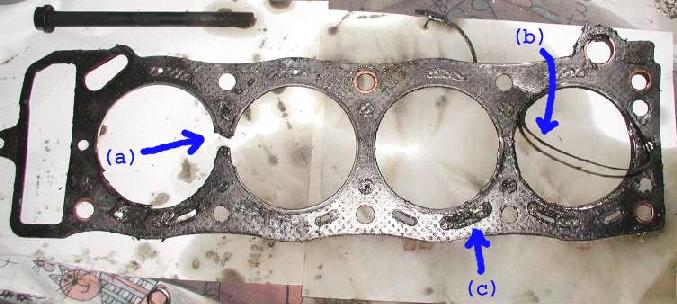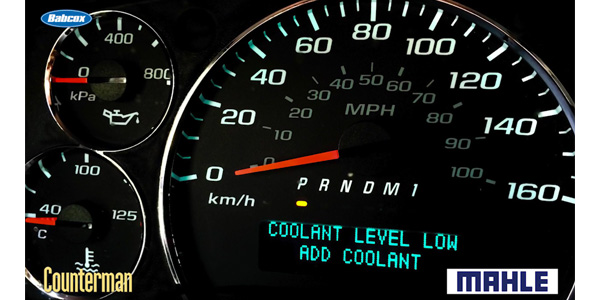5 Signs You Have A Blown Head Gasket And How To Prevent It

Find online help life123 are here to help. trusted listings and information. get most out of professional assistance near you. fast & easy as 1-2-3. Costhelper estimates that a gasket head replacement can take between five and eight hours, although the time varies based on the type of car. in addition, costhelper estimates that a gasket head replacement can take between five and eight h. Your vehicles exhaust system can provide you with several indications of a blown head gasket. first off, water leaking from your cars exhaust pipe is a fairly straightforward sign of a blown gasket. also, if there is a distinctly sweet smell emanating from your vehicles exhaust or if you notice white smoke coming out of your cars tailpipe, youre most likely dealing with the same cause. upon noticing any of these signs, promptly replace your head gasket and the problems should be fixed.
When faced with contaminated oil, you will need to promptly replace your head gasket and have your vehicles oil changed. 2. faulty exhaust. your vehicles exhaust system can provide you with several indications of a blown head gasket. first off, water leaking from your cars exhaust pipe is a fairly straightforward sign of a blown gasket. See more videos for head gasket blown signs. The signs of a blown head gasket can be subtle. here are eight of the most common indications that your head gasket has failed: an external oil or coolant leak at the seam between the engine block gasket head signs blown and cylinder head is a sign that you have a head gasket failure or a cracked block. on disassembly, check for cracks and cylinder head warping.
The cylinder head gasket is a thin metal template that sits between the cylinder head and the engine block. the gasket provides an airtight seal that prevents coolant or engine oil from leaking into the cylinders and contaminating the engin. If your vehicles engine has been slow or unresponsive, you may be dealing with a blown gasket. your engine will experience a loss of compression should your head gasket incur any damage, potentially causing it to overheat. if your vehicle exhibits these symptoms, be sure to address the problem promptly, as overheated engines can present major safety hazards. If your head gasket has sprung a leak, air bubbles are liable to find their way into your radiator. in order to confirm the presence of air bubbles, carefully remove your radiator cap; then, give your vehicles engine ample time to warm up. next, proceed to rev your engine several times. if air bubbles emerge, you will know what to do. See full list on doityourself. com.
Kseal Hd
Head gaskets can fail or blow when the engine overheats or from regular usage. if you think your car has a blown gasket head signs blown head gasket, you should look for the following seven signs. 6 signs your cars heater core needs replacing. 1) bubbles in radiator. one sign of a blown head gasket is bubbles in the radiator. Searching for blown head gasket symptoms at helpwire. com. search information here.
The signs of a blown head gasket include oil leaks and an overheating engine. it might seem look coolant is disappearing or that the exhaust has a white tint, too. a blown head gasket comes with a hefty repair bill of anywhere from $1400 to $2500, depending on the cars make and model. A head gasket failure may be caused by an engine overheating one too many times (as a result of a clogged radiator, coolant leak, faulty fan, etc. ), but the blown head gasket can also cause the engine to overheat. Maintaining a car requires effort. certain things will happen over time on any vehicle. however, doing your own repairs and maintenance can save a lot of money, such as fixing a blown head gasket. but after the repair you must take special. K-seal expert advice diagnose your engine problems fix your blown head gasket with ease tell-tale signs of a blown head gasket tell-tale signs of a blown head gasket knowing the symptoms of a blown head gasket can help you catch the problem early, so you can fix it fast without the need for expensive repairs.
The head gasket seals the combustion chambers to prevent compression loss. 7 blown head gasket symptoms. if youre running with a blown head gasket, chances are youll experience one or more of these symptoms: continuously depleting coolant. in the middle of the head gasket, there are large-diameter openings for the engines combustion. More head gasket blown signs images.

See full list on axleaddict. com. Moreover, another telling signs of blown head gasket is the presence of foam or bubbles in the radiator. you can check this by cooling the engine down and removing the radiator cap. then start the engine and rev it, if you see bubbles or foam forming in the radiator it means there is a leak in the circuit. what if you ignore a blown head gasket?. The head gasket is a piece of plastic that forms a seal between a vehicles engine and head. it prevents coolant and oil from mixing as it enters the engine. if you notice signs of a leak, you may have time to stop it before replacing the h. Overheating is one of the less-obvious signs of a blown head gasket head signs blown gasket. depending on the severity of the leak, you may see bubbles in the overflow tank, indicating that the cylinder is leaking into the cooling system. blue exhaust smoke could also indicate head gasket failure, but so could worn rings, valve stem seals or a faulty pcv system.
One surefire sign of a blown head gasket is contaminated oil, which is a direct result of a head gasket that has sprung a leak. to check for this problem, carefully inspect your vehicles oil cap. if you find a milk-like ring around the cap, your oil has been contaminated. this ring indicates that your coolant has been mixed with your oil. when faced with contaminated oil, you will need to promptly replace your head gasket and have your vehicles oil changed. If youve begun to suspect that you have a blown head gasket on your hands, youre probably wondering how to go about confirming it. youll be pleased to know that detecting a blown head gasket can be a fairly simple undertaking, even for those who arent automotive experts. you just need to know what signs to look for. so if youre interested in diagnosing your vehicle for this problem, read on to learn everything youll need to look for. Because the cylinder head gasket seals coolant passages, a blown head gasket will allow coolant to enter the cylinders. coolant in the cylinders will cause: gasket head signs blown white smoke coming from the tailpipe bubbling in the radiator and coolant reservoir.

Mar 10, 2020 one sign of a blown head gasket is bubbles in the radiator. to see if your radiator is bubbling, wait for your cars engine to completely cool off usually about two hours after driving and carefully remove the radiator cap with a rag or towel. now crank your car and observe the coolant as it flows across the filler neck of the radiator. You may want to look out for these common signs of a blown head gasket: radiator constantly needing to be topped up with water or coolant. increased engine running temperature. engine gauge showing maximum temperature after a few minutes. cloud of exhaust fumes when idling, or white smoke coming from exhaust. You may want to look out for these common signs of a blown head gasket: radiator constantly needing to be topped up with water or coolant. increased engine running temperature. engine gauge showing maximum temperature after a few minutes. cloud of exhaust fumes when idling, or white smoke coming from exhaust. Jan 18, 2019 sign 2: mixed coolant and oil. considering that its the head gaskets job to keep oil and.
0 komentar:
Posting Komentar